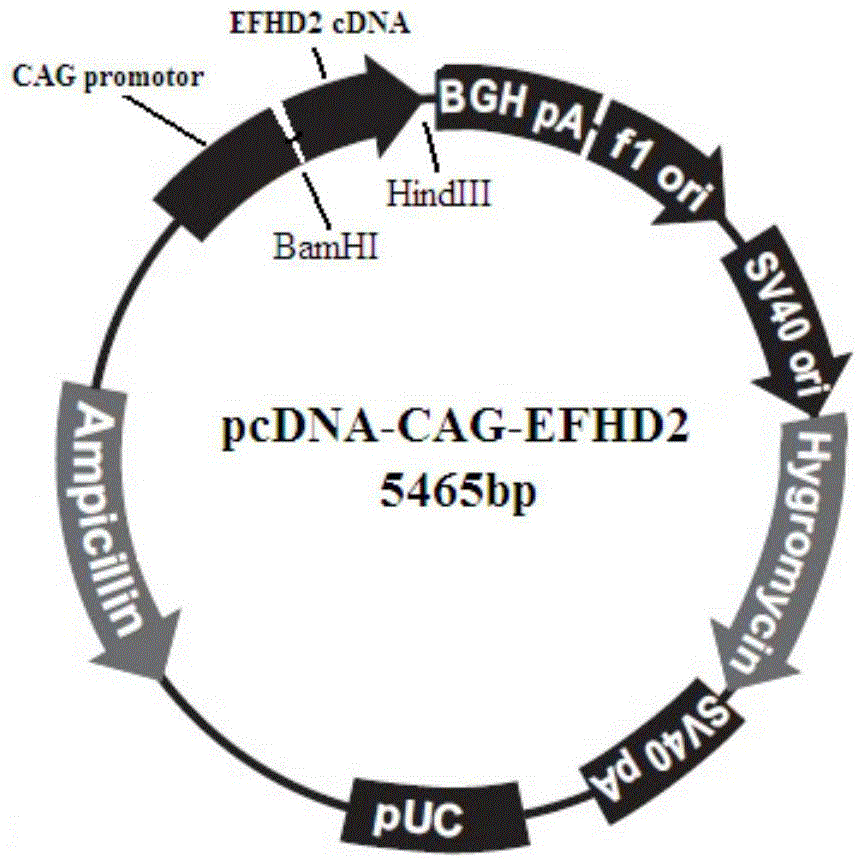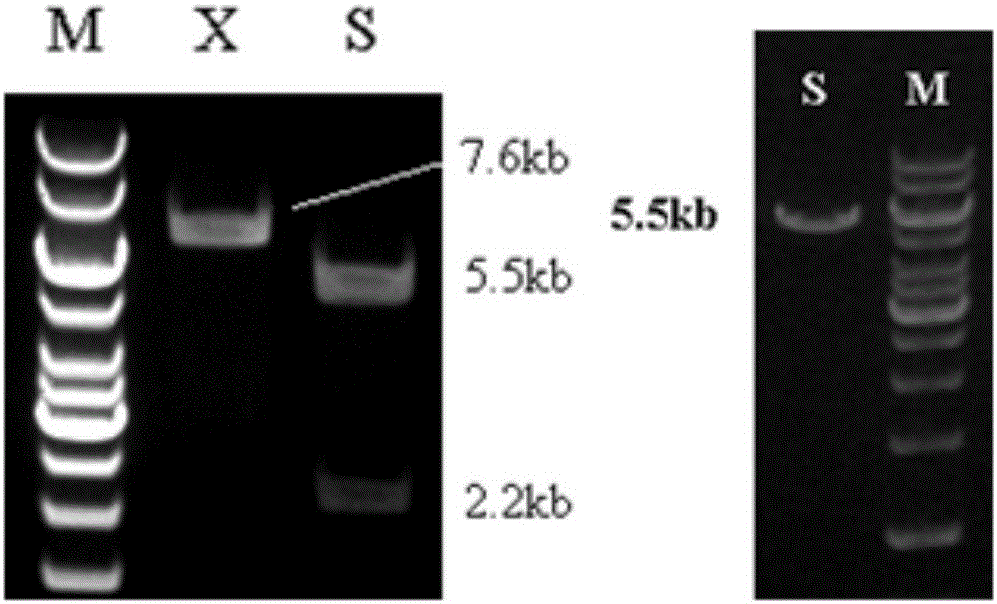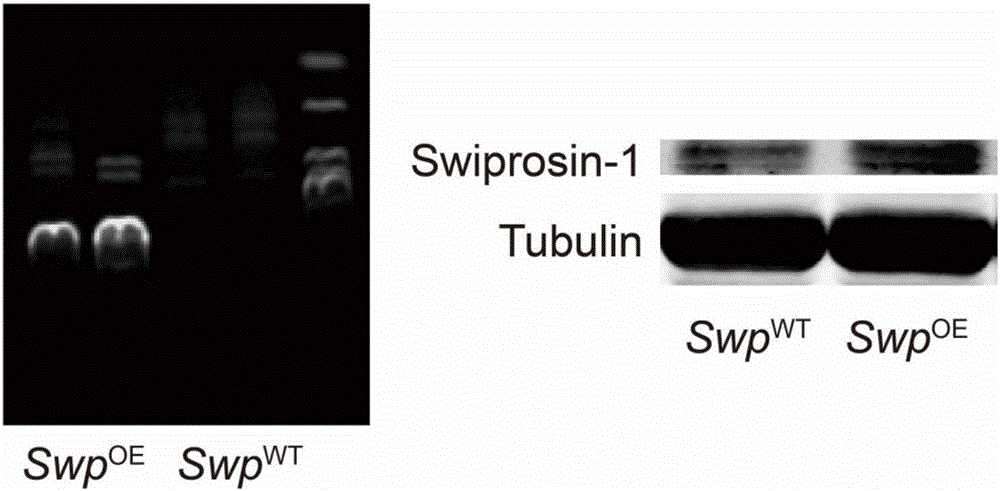Method for improving blood-brain barrier permeability by regulating Swiprosin-1 expression
A blood-brain barrier and permeability technology, applied in the field of molecular biology, can solve problems such as the unclear role of Swiprosin-1, and achieve the effect of improving expression
- Summary
- Abstract
- Description
- Claims
- Application Information
AI Technical Summary
Problems solved by technology
Method used
Image
Examples
Embodiment 1
[0053] Example 1 Increased blood-brain barrier permeability in mice overexpressing Swiprosin-1
[0054] 1. Preparation of Swiprosin-1 overexpression mice
[0055] 1 material
[0056] Plasmid pcDNA-CAG (sequence shown in SEQIDNO.7) was provided by the Southern Model Organism Research Center, DH5α was purchased from Tiangen Biological Company, EFDH2cDNA was purchased from SourceBioscience; various restriction enzymes, T4DNA ligase, T4DNApolymerase, Taq enzyme Reagents related to PCR and PCR were purchased from Takara and NEB companies; Gel Recovery Kit was purchased from Tiangen Biological Company, Plasmid Extraction Kit was purchased from Qiagen Company; anti-goat Swiprosin-1 polyclonal antibody was purchased from Imgenex Company.
[0057] The sequences of primers for transgenic plasmid construction and primers for identification of transgenic positive mice are as follows:
[0058] efdhu1
catGGATCcggggagtgtcaggaagaggaag
SEQ ID NO.5
efdhl1
catAAGCTT...
Embodiment 2
[0101] Example 2 Decreased blood-brain barrier permeability in Swiprosin-1 knockout mice after MCAO
[0102] 1. Swiprosin-1 knockout mice (Swp - / - )preparation
[0103] 1 method
[0104] 1.1 Construction of transgenic plasmid
[0105] The long arm fragment and the short arm fragment were cloned from the Swiprosin-1 gene, and after connecting into the T vector to confirm the correctness of the above fragments, the short arm fragment was connected into the Neo vector to obtain the Neo-short arm vector, and then the long arm fragment was connected Insert the Neo-short arm vector to obtain the long arm-Neo-short arm vector, and finally connect the long arm-Neo-short arm vector to the TK vector to obtain the TK-long arm-Neo-short arm vector. The final vector was verified by enzyme digestion and sequencing.
[0106] 1.2 Preparation of transgenic mice
[0107] The TK-long arm-Neo-short arm vector was digested with Not1, and the DNA fragment containing the long arm sequence and s...
Embodiment 3
[0152] Example 3 Cell Experiment of Swiprosin-1 Gene Knockout
[0153] The effects of Swiprosin-1 gene knockout in rat brain microvascular endothelial cells rBMEC on the expression of tight junction protein ZO-1 were studied by oxygen-glucose deprivation (OGD).
[0154] 1 material
[0155] The lentiviral vector pLVTHM was purchased from Shenzhen Baozhu Biotechnology Co., Ltd., see the vector map Figure 10 ; Chloral hydrate and TTC were purchased from Sinopharm Chemical Reagent Co., Ltd.; PBS was purchased from Shanghai Boguang Biological Co., Ltd.; fetal bovine serum (FBS) and DMEM medium were purchased from Gibco.
[0156] 2 methods
[0157] 2.1 Swiprosin-1 interferes with lentiviral vector construction
[0158] The following siRNA molecules for Swiprosin-1 were designed:
[0159] Sense strand: 5'-AAGGGUGCCAAGAACUUCU-3' (SEQ ID NO.1);
[0160] Antisense strand: 5'-AGAAGUUCUUGGCACCCUU-3' (SEQ ID NO.2).
[0161] According to the above siRNA molecule design and synthesis ...
PUM
 Login to View More
Login to View More Abstract
Description
Claims
Application Information
 Login to View More
Login to View More - R&D
- Intellectual Property
- Life Sciences
- Materials
- Tech Scout
- Unparalleled Data Quality
- Higher Quality Content
- 60% Fewer Hallucinations
Browse by: Latest US Patents, China's latest patents, Technical Efficacy Thesaurus, Application Domain, Technology Topic, Popular Technical Reports.
© 2025 PatSnap. All rights reserved.Legal|Privacy policy|Modern Slavery Act Transparency Statement|Sitemap|About US| Contact US: help@patsnap.com



